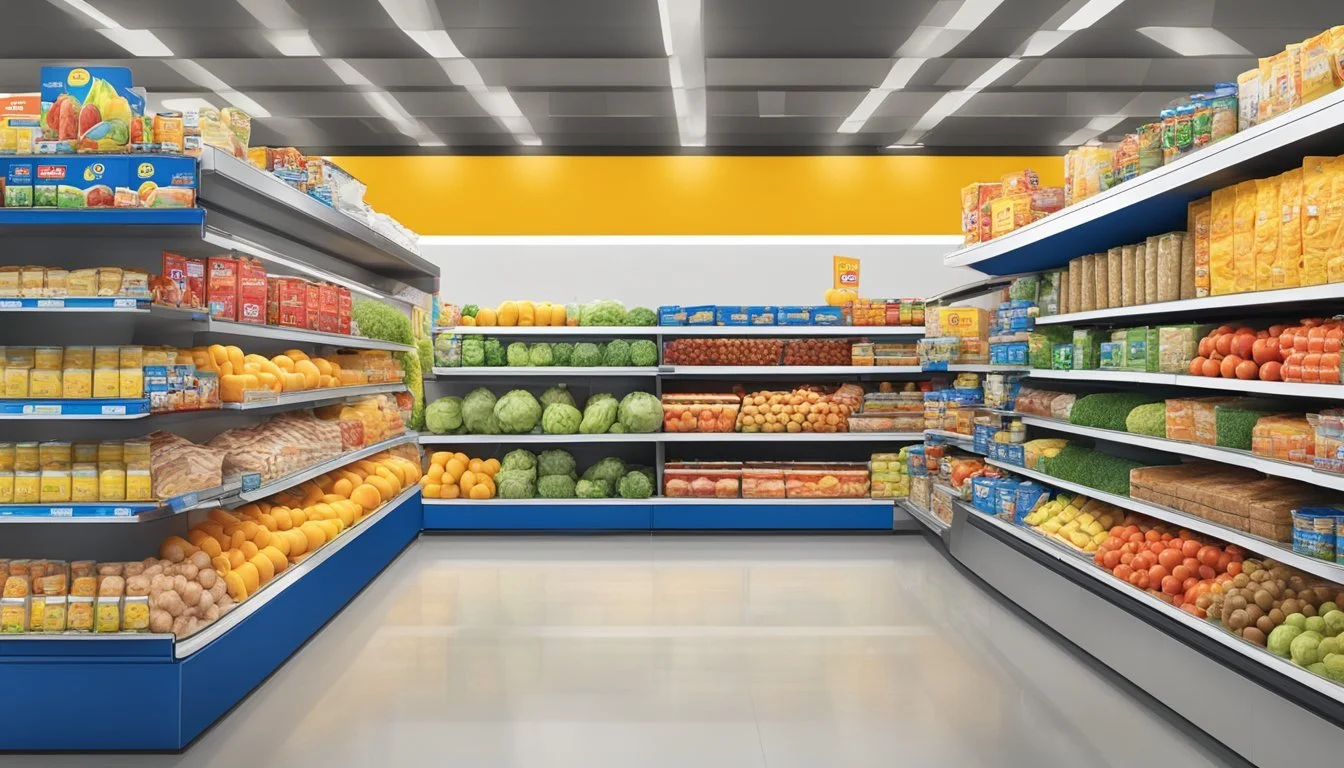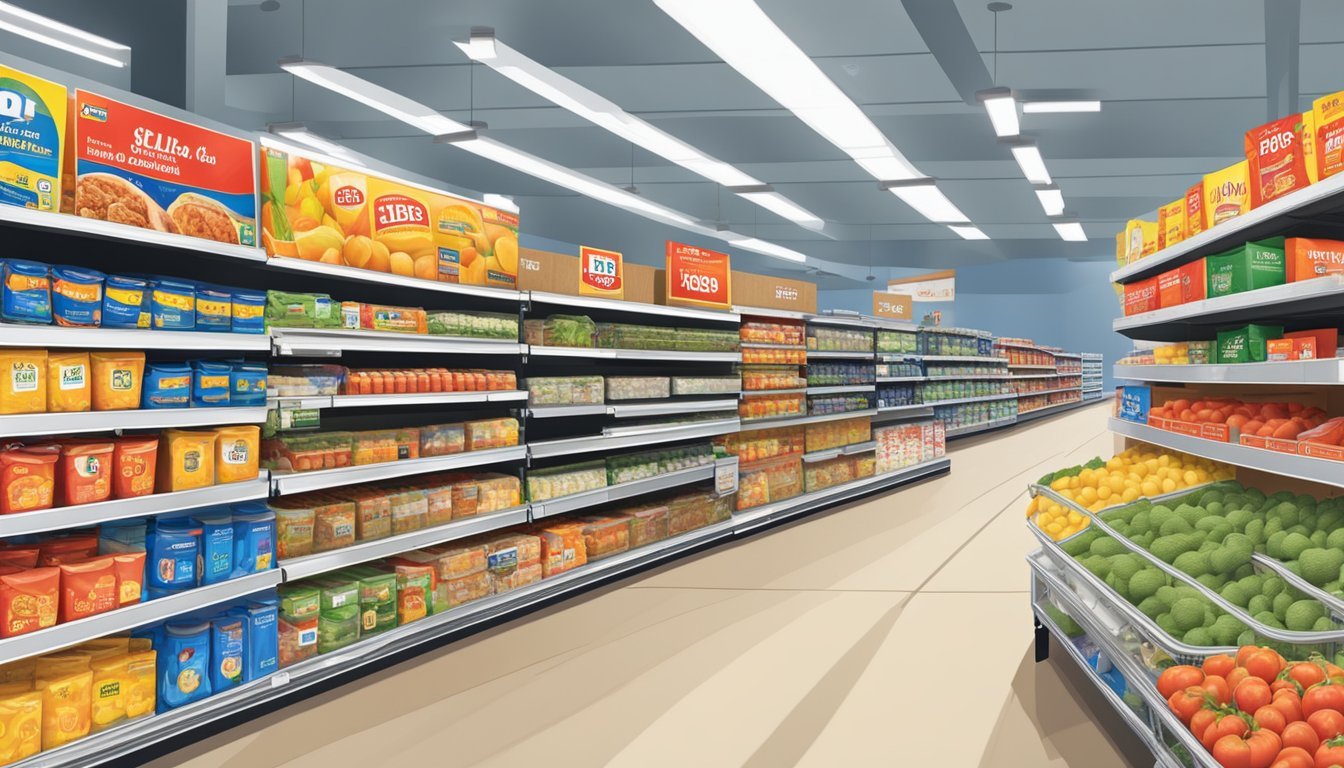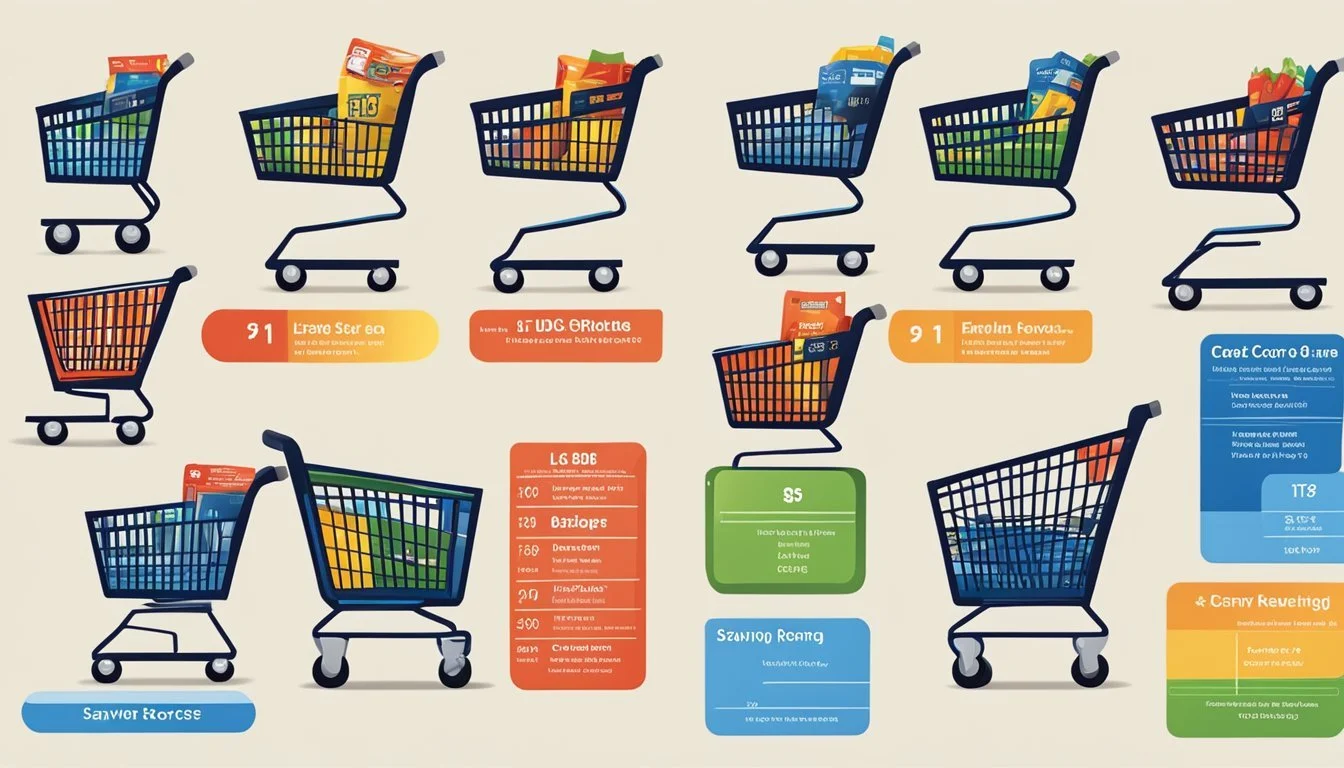Is H-E-B Cheaper Than Lidl?
Analyzing Grocery Pricing Strategies
Part of Our Grocery Store Guide with Details on H-E-B Prices and Lidl Prices
When shopping for groceries on a budget, consumers look for stores that offer quality products while keeping prices low. H-E-B, a Texas-based supermarket, and Lidl, a German discount grocery chain with locations across the United States and Europe, are both popular options for economical grocery shopping. While Lidl is known for its high-efficiency stores that reduce unnecessary costs by offering fewer brands, streamlined layouts, and self-service models, H-E-B has cultivated a loyal following by providing a wide variety of goods, including their in-house brand that often undercuts the prices of national brands.
The competition between grocery stores is fierce, especially when comparing H-E-B, a well-established player in the Texas market, to Lidl, which has recently expanded its footprint internationally. Both stores have unique strategies to keep their prices low. Lidl's lean business model allows it to compete aggressively on price by simplifying choices and passing savings onto customers. H-E-B, on the other hand, capitalizes on its regional familiarity and economies of scale to offer competitively priced goods.
The question of whether H-E-B is cheaper than Lidl does not have a universal answer, as prices can vary based on location, selection, and the types of items purchased. While Lidl may offer lower prices on European goods or their limited selection of brands, H-E-B's pricing strategy may make it the more affordable option for shoppers looking for a broader range of products or bulk items. Ultimately, to determine which store is more cost-effective, customers must consider their shopping habits, the diversity of their grocery lists, and the importance of brand variety in their purchasing decisions.
Understanding Grocery Pricing
When analyzing grocery pricing strategies, it's imperative to consider various factors that influence prices, assess comparisons using a standard methodology, and understand consumer shopping behaviors that can impact the overall grocery bill.
Factors Influencing Grocery Prices
Grocery pricing is affected by a multitude of factors. Location plays a significant role; for instance, stores in areas with higher rent may have increased prices. Operational costs, such as labor, utilities, and efficiency in store operations, also dictate price points. Moreover, the selection and quality of products, including name-brand and store brands or private-label products, can lead to price variations. A store offering a wide array of services and customer service features may incorporate these into their pricing structure.
Price Comparison Methodology
To accurately compare prices between H-E-B and Lidl or any other grocery stores, a market basket approach is often used. This involves selecting a consistent set of items, encompassing both name-brand products and private-label products, to establish a fair comparison. The comparison must account for any available discounts, coupons, or promotions that can affect the budget. A methodical approach ensures that conclusions on the cheapest grocery stores are based on consistent data.
Consumer Shopping Behavior
Consumers can influence their own grocery bills through behaviors like meal planning, use of coupons, and purchasing items in bulk to save money. Those aiming for the lowest prices often shop at discount retailers known for budget-friendly options. Meanwhile, preferences for either quality or selection could lead to higher spending, albeit for perceived value. Customers value different facets of shopping, such as convenience, quality, or simply the cheapest options, all of which shape grocery store pricing strategies.
Assessing Grocery Costs at Lidl and H-E-B
When comparing grocery costs, Lidl and H-E-B each have distinct strategies. Lidl emphasizes efficiency and a budget-friendly European model, whereas H-E-B focuses on a balance of quality and affordability with a wide selection tailored to Texas consumers.
Lidl's Pricing Strategy
Lidl, as a German grocer known for its discount prices, generally maintains a smaller store footprint that enables it to offer its customers low prices. This strategy is rooted in a carefully curated selection of products that emphasizes private labels and efficiency to keep the costs down. Consistently affordable pricing places Lidl in direct competition with other discount grocers, such as Aldi and Walmart, known for undercutting prices.
H-E-B's Pricing Approach
In contrast, H-E-B, a Texas-based grocery store, employs a more diverse strategy by providing competitive prices without compromising on selection or quality. While not always as inexpensive as Lidl, their approach involves regular discounts, coupons, and bulk savings akin to models seen at Sam's Club and Costco. H-E-B's prices can be compared to other regional competitors like WinCo and Food 4 Less, as they strive to deliver both an extensive range of products and affordable options to their customers.
Product Price Comparison
When comparing the prices of products at H-E-B and Lidl, it's essential to look at specific categories such as fresh produce, meats, and dry goods. This detailed analysis provides insight into which store offers better value in each aspect.
Fresh Produce Pricing
At H-E-B, customers can find a variety of seasonal and local produce, which might influence the pricing slightly due to the sourcing strategies favoring freshness and support for local growers. Lidl, on the other hand, is known for offering competitive pricing on fresh produce including organic options, though the selection can vary based on the store's European-style rotating inventory.
Item H-E-B Price Lidl Price Organic apples $1.50/lb $1.30/lb Bell peppers $0.78 each $0.69 each Spinach $2.49/bag $1.99/bag
Meat and Seafood Costs
H-E-B prides itself on high-quality meat and seafood selections, often featuring products with higher price points as a reflection of their quality. Lidl has a smaller but competitively priced selection of meat and seafood, which may cater to budget-conscious shoppers.
Item H-E-B Price Lidl Price Ground beef 1lb $4.49 $3.79 Salmon fillets $9.99/lb $8.49/lb Chicken breasts $2.99/lb $2.29/lb
Dry Goods and Pantry Items
The dry goods and pantry items section at both supermarkets includes rice, pasta, cereal, beans, baking supplies, and canned goods. H-E-B offers a wide selection, including bulk section purchases that can save money in the long run, alongside a variety of gluten-free options. Lidl often undercuts the competition with lower prices on many pantry staples, although their variety can be more limited.
Item H-E-B Price Lidl Price White rice 1lb $0.70 $0.59 Pasta 16 oz $1.29 $0.99 Cereal 12 oz $3.49 $1.99
Additional Costs and Savings Opportunities
When comparing H-E-B and Lidl, customers should consider the varying additional costs and savings opportunities each store offers through memberships, coupons, and in-store services.
Membership and Loyalty Rewards
H-E-B does not have a formal membership program but offers a loyalty rewards program which focuses on earning points through purchases that can be redeemed for discounts on fuel at H-E-B Fuel stations. Lidl, on the other hand, runs a membership program called Lidl Plus where customers can access digital coupons and receive instant savings at checkout.
H-E-B Rewards: Earn points for every dollar spent; redeem for fuel discounts.
Lidl Plus: Free to join; offers exclusive discounts and digital receipts.
Coupons and Special Discounts
Both H-E-B and Lidl offer a variety of coupons and special discounts designed to help customers save money. H-E-B provides digital coupons that can be accessed through their app or website, offering both general and personalized deals. Lidl advertises special discounts in weekly flyers and on their app, with an efficient and user-friendly way to apply these discounts to a customer's shopping cart.
H-E-B Coupons: Accessed via app or website; includes Combo Locos and Meal Deals.
Lidl Special Discounts: Weekly specials advertised on the app; often include discounts on bakery, cheese, wine, and alcohol.
In-Store Services and Amenities
The in-store experience can impact the overall cost and convenience of shopping. H-E-B boasts numerous in-store services such as a bakery, deli, and food court, which add value to the shopping experience. Meanwhile, Lidl approaches store amenities with a focus on efficiency, usually offering a select range of services to keep operational costs and thus prices low.
H-E-B Services: Full-service bakery, deli, and customer service; the option to bag your groceries at checkout.
Lidl Amenities: Streamlined shopping experience with a focus on efficiency; limited services lead to lower staffing costs.
Regional and Brand Variability
In analyzing grocery pricing and selection, one must consider both regional market differences and the varying strategies of national versus regional chains. Additionally, the choice between private labels and brand names significantly influences consumer cost.
Impact of Regional Market Differences
H-E-B, as a regional grocery mainstay rooted in San Antonio, and Lidl, a discount grocer with international roots, both operate within different market conditions depending on their location. For instance, in Texas, H-E-B may benefit from proximity to Mexican supply chains and a tailored selection suited to local preferences, potentially offering lower food prices. On the other hand, Lidl’s expansion into the US market, with stores in states such as Virginia and North Carolina, reflects regional adjustments in pricing to remain competitive against local and national players. Rural areas may see higher prices due to increased distribution costs, which both chains must navigate.
Comparing National and Regional Chains
The presence of national chains such as Kroger, Costco, Walmart, and Trader Joe’s creates different competitive dynamics that can shape pricing for regional chains like H-E-B and Lidl. National chains benefit from economies of scale and wide brand recognition, often offering competitive pricing structures. Regional chains, while limited geographically, often adapt quickly to regional preferences and manage strong loyalty by curating an image that resonates with the locals—like H-E-B's rapport in Texas, or WinCo's in the Pacific Northwest.
Private Labels vs. Brand Names
H-E-B and Lidl’s store brands offer a point of differentiation from chains that primarily sell name-brand products. The private-label products, such as H-E-B's store brands and Lidl's preferred selection, typically provide similar quality to branded items like those from Trader Joe’s or Sprouts, but at a lower cost. These products span a variety of categories, including organic, gluten-free, and vitamin sections, allowing them to directly compete with specialized chains like Wegmans and Publix. This strategy doesn't just cater to budget-conscious consumers; it also builds unique brand identity that stands out from the competition.
By examining these factors, it is clear how regional and brand variability impact the consumer's experience and perception of value when it comes to grocery shopping.
Consumer Resources and Tips
When considering whether H-E-B is cheaper than Lidl, consumers should focus on effective shopping strategies, utilizing online tools, and understanding seasonal promotions. By leveraging these tactics, shoppers can enhance their shopping experience while adhering to a budget.
Effective Grocery Shopping Strategies
Shopping efficiently is key to saving money. Consumers are advised to plan their meals in advance and create a targeted shopping list to avoid impulse purchases. Comparing the selection and prices of groceries at both H-E-B and Lidl is crucial. H-E-B offers a wide variety of products, including their Texas Heritage line of meats, which suggests a robust selection. Lidl, known for its low prices and limited options, competes by offering a smaller, curated selection that can lead to savings. At both supermarkets, consumers can maximize savings by focusing on store brands, which are often cheaper than national brands.
Meal Planning: Jot down weekly meals and required ingredients.
Shopping List: Stick to the list to prevent overspending.
Utilizing Online Tools and Services
In today's digital age, both H-E-B and Lidl offer online services that enhance convenience. Consumers should use these websites and digital services for price comparisons and shopping from home. Websites often feature exclusive discounts and specials. H-E-B's digital platform and mobile app can be particularly helpful for reviewing current deals and managing rewards programs, potentially tipping the scales in H-E-B's favor for those who value convenience and added value through rewards.
Price Tracking: Utilize websites to monitor product pricing.
Rewards Programs: Sign up for supermarket rewards programs to earn savings.
Understanding Seasonal and Promotional Offers
Seasonal and promotional offers are strategies both supermarkets use to attract customers. Consumers should stay informed about current specials and seasonal discounts, which can lead to significant savings on the shopping cart total. H-E-B is known for its strategic promotions in metro areas, while Lidl's European market approach introduces a unique set of specials that can benefit budget-focused shoppers.
Special Alerts: Subscribe to newsletters or alerts to stay informed about specials.
Seasonal Purchases: Buy produce when in season for the best prices and quality.






